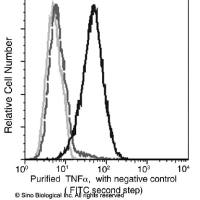Searching the Mouse Genome Informatics (MGI) Resources for Information on Mouse Biology from Genotype to Phenotype
互联网
- Abstract
- Table of Contents
- Figures
- Literature Cited
Abstract
The Mouse Genome Informatics (MGI) resource provides the research community with access to information on the genetics, genomics, and biology of the laboratory mouse. Core data in MGI include gene characterization and function, phenotype and disease model descriptions, DNA and protein sequence data, gene expression data, mammalian orthologies, SNPs and PCR polymorphisms, mapping data, and links to other bioinformatics databases. Data integration is supported through the use of standardized nomenclature, and through the use of controlled vocabularies such as the mouse Anatomical Dictionary, the Mammalian Phenotype Ontology, and the Gene Ontologies. MGI extracts and organizes data from primary literature. MGI data are shared with and widely displayed from other bioinformatics resources. The database is updated nightly with curated annotations, and regularly adds new datasets. This unit provides a guide to using the MGI bioinformatics resource. Curr. Protoc. Bioinform. 25:1.7.1?1.7.14. © 2009 by John Wiley & Sons, Inc.
Keywords: mouse; genome; genes; phenotypes; expression; alleles; function
Table of Contents
- Introduction
- Basic Protocol 1: Using the MGI Home Page
- Alternate Protocol 1: Using the Gene Expression Data Search Form to Search for Gene Expression Data by Tissue and Assay Type
- Alternate Protocol 2: Using the Gene Ontology Browser
- Alternate Protocol 3: Phenotype Search
- Alternate Protocol 4: Mouse Models of Human Diseases
- Alternate Protocol 5: Polymorphisms
- Commentary
- Literature Cited
- Figures
Materials
Figures
-
Figure 1.7.1 The MGI Home Page organizes search tools by topic and permits simple keyword searches. Here the partial gene symbol pax with the wild card, *, has been entered for a default search for gene symbols, names, synonyms, and vocabulary terms. Note that MGI Web searches are case‐insensitive. View Image -
Figure 1.7.2 Search results for gene symbols, names, synonyms, and vocabulary terms and their definitions that contain words beginning with “pax.” See text for details. View Image -
Figure 1.7.3 Pax6 Gene Detail page. This page offers links to all the information MGI has curated for Pax6 , including map location, a summary of expression data, orthologs, GO annotations, and references. See text for details. View Image -
Figure 1.7.4 The Gene Expression Data query form filled out for a search of in situ assays that detected expression in mouse eyes for transcription factor genes mapped to chromosome 2. See text for details. View Image -
Figure 1.7.5 A portion of Gene Ontology Detail page for the biological process term “epithelial cell differentiation,” showing the hierarchical structure. View Image -
Figure 1.7.6 A portion of an Allele Detail page with the link to search the International Mouse Strain Resource (IMSR), marked by an arrow. View Image -
Figure 1.7.7 The results of a search for polymorphic differences between inbred mouse strains whose names begin with BALB/c or C57BL/6, for markers mapped within 2 cM of the gene Pax6 . In these results, the black balls separate strains by their PCR product sizes. View Image
Videos
Literature Cited
| Ashburner, M., Ball, C.A., Blake, J.A., Botstein, D., Butler, H., Cherry, J.M., Davis, A.P., Dolinski, K., Dwight, S.S., Eppig, J.T., Harris, M.A., Hill, D.P., Issel‐Tarver, L., Kasarskis, A., Lewis, S., Matese, J.C., Richardson, J.E., Ringwald, M., Rubin, G.M., and Sherlock, G. 2000. Gene Ontology: Tool for the unification of biology. Nat. Genet. 25:25‐29. | |
| Bard, J.B.L., Kaufman, M.H., Dubreuil, C., Brune, R.M., Burger, A., Baldock, R.A., and Davidson, D.R. 1998. An internet‐accessible database of mouse developmental anatomy based on a systematic nomenclature. Mech. Dev. 74:111‐120. | |
| Blake, J.A., Bult, C.J., Eppig, J.T., Kadin, J.A., Richardson, J.E., and the Mouse Genome Database Group. 2009. The Mouse Genome Database genotypes::phenotypes. Nucleic Acids Res. 37:D712‐D719. | |
| Hill, D.P., Blake, J.A., Richardson, J.E., and Ringwald, M. 2002. Extension and integration of the Gene Ontology (GO): Combining GO vocabularies with external vocabularies. Genome Res. 12:1982‐1991. | |
| Smith, C.L., Goldsmith, C.A., and Eppig, J.T. 2005. The Mammalian Phenotype Ontology as a tool for annotating, analyzing and comparing phenotypic information. Genome Biol. 6:R7. | |
| Smith, C.M., Finger, J.H., Hayamizu, T.F., McCright, I.J., Eppig, J.T., Kadin, J.A., Richardson, J.E., and Ringwald, M. 2007. The mouse gene expression database (GXD): 2007 update. Nucleic Acids Res. 35:D618‐D623. | |
| Key Reference | |
| Blake et al., 2009. See above. | |
| Nucleic Acids Research's annual Database Issue offers an overview of MGI. | |
| Internet Resources | |
| ftp://ftp.informatics.jax.org/pub/reports/index.html | |
| Nightly data reports such as those associating gene symbols with MGI Accessions IDs, map positions, and GenBank Accession IDs are available by FTP from this site. | |
| http://www.informatics.jax.org/javawi2/servlet/WIFetch?page=batchQF | |
| This Batch Query tool that allows you to retrieve data about many genes in MGI all at once. You can paste or upload a file containing a column of gene symbols or IDs into the batch query tool. You can also specify the output you want in the results, such as nomenclature, genome location, gene ontology, or mammalian phenotype data. | |
| http://www.informatics.jax.org/mgihome/homepages/help.shtml | |
| MGI resources are thoroughly documented via the links on this page. | |
| http://www.informatics.jax.org/submit.shtml | |
| MGI accepts electronic data submissions of any type of data that MGI maintains. Information on submitting data from outside sources is available on this Web page. | |
| http://www.informatics.jax.org/resources.shtml#books | |
| An electronic version of the book Biology of the Laboratory Mouse, by the staff of The Jackson Laboratory, edited by Earl L. Green, is available online, along with versions of these out‐of‐print books: The Anatomy of the Laboratory Mouse by Margaret J. Cook, Mouse Genetics by Lee Silver, The Coat Colors of Mice by Willys K. Silvers, and Origins of Inbred Mice, edited by Herbert C. Morse III. The books are thoroughly indexed and linked to Gene Detail pages at MGI, as well as to references at MGI and PubMed. Links to all five books can be found on this page. | |
| http://www.informatics.jax.org/mgihome/lists/lists.shtml | |
| MGI maintains and moderates an e‐mail bulletin board, mgi‐list, for the mouse genetics research community. A Web interface to the list archives is available on this page. | |
| http://www.informatics.jax.org/imsr/index.jsp | |
| The International Mouse Strain Resource (IMSR) is a searchable online database of mouse strains and stocks available worldwide from several providers. Contributed by David Shaw. |









